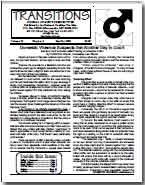
The following is a transcript of Greg Andresen’s speech at the International Men’s Day Masculinity Debate in Sydney on Thursday 19th November 2015. The topic was “If masculinity is in crisis, what needs to change, men or society?”.
I am going to talk in quite a specific way about how this evening’s topic applies to the work that the One in Three Campaign does in advocating for male victims of family violence.
There is no doubt that male victims of family violence are in crisis. Recent qualitative Australian research clearly shows they experience much the same forms of violence and abuse as do female victims. However, they are much less likely to disclose it.
According to the 2012 ABS Personal Safety Survey, only 46% of males who have experienced current partner violence have ever told anyone about it, only 30% have sought advice or support and only 5% have contacted police.
So, male victims are in crisis, they need help, but they are reluctant to talk about it. Why is this? Research shows that both internal and external factors are involved.
Many male victims face barriers to disclosing their abuse because of the challenges such disclosure brings to their sense of manhood. Even in 2015, when we see almost as many new dads out and about pushing prams as we do new mums, men are still raised to believe that to be a good man they must be strong, tough, able to protect and defend themselves, able to take it on the chin, able to sort out their own problems rather than ask for help.
Because of this they report experiencing a great deal of shame, embarrassment, and social stigma in disclosing they are being abused, especially if it’s by a woman who is usually seen as the smaller, weaker, less powerful partner. They fear being laughed at or ridiculed or called ‘weak’ or ‘wimpy’ – and often with good reason. They experience disbelief and denial, or make excuses for the violence.
Many barriers to male victims disclosing their abuse are created or amplified by the lack of public acknowledgement that males can also be victims of family violence, along with the lack of appropriate services for male victims and their children.
Men often don’t know where to seek help or how to seek help. They feel there is nowhere for them to escape to, that they won’t be believed or understood, that their experiences will be minimised, that services will be unable to offer them appropriate help, or they may be blamed for the violence and falsely arrested simply because of their gender (and their children left with the abuser).
So, male victims are in crisis, they need help, they’re reluctant to disclose, but they need to start disclosing if they are to get the help they need. The pressures on these men that prevent them disclosing are all social pressures. The internal factors have come about because of the way society socialises our boys and young men. The external factors have come about because of the way our society has approached the issue of domestic and family violence historically through the singular lens of the experience of women, and has provided services largely for women only as a result (services that have been desperately needed, of course).
Since our inception, One in Three has argued a simultaneous two-pronged approach is required from governments and NGOs in order to address the needs of male victims of family violence. We need Government-funded public awareness campaigns to raise awareness of family violence against men and break down the stigma that prevents men disclosing such violence. These campaigns need to be carefully designed so as to complement campaigns about violence against women and not damage their effectiveness.
At the same time governments and NGOs need to provide a modicum of services on the ground to support male victims when they do summon up the courage to come forward. Some of these services may be able to be integrated with general and women’s services, while others may need to be gender-specific.
Alone these strategies are almost guaranteed to fail. But together they will hopefully encourage more male victims to come forward and seek the help they need, while providing the services to support them.
The good news is that male victims appear to be coming forward in greater numbers than ever before. There was a 175% rise between 2005 and 2012 in the number of men reporting current partner violence since the age of 15 to the ABS. There is also some good news on the service provision front – governments are starting to open up some women-only services to male victims and there are now some small but promising pilot programs for men in a number of locations.
However there is still a lot of work to do. The main challenge we face is the perception that advocating for male victims is somehow an attack upon female victims or upon women in general. It’s not. It never has been. We believe our society has the capacity to support all victims of family violence, whether young or old, male or female, gay or straight, rich or poor, wherever they live.
Thank you.


